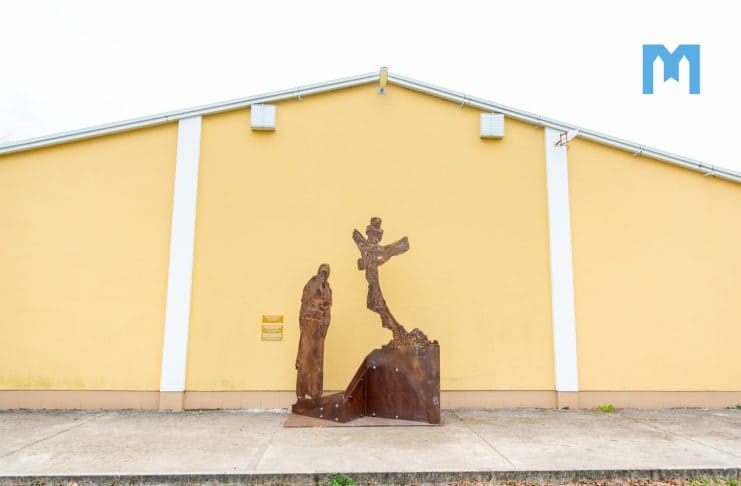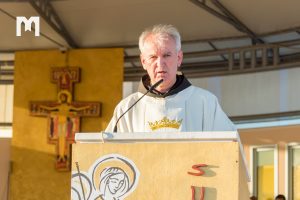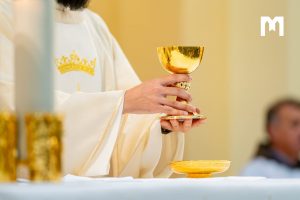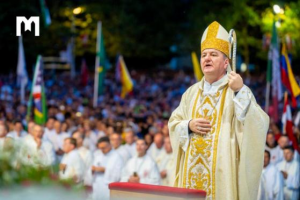
In Medjugorje, a monumental sculptural work that travels around the world from the private collection “Images of Faith”, Mercy – Bridge for Peace, was installed, and the author of this work is the artist Guido Rainaldi from Italy. The artwork shows two large figures, in the foreground is St. John Paul II, in the act of taking the last steps of his earthly life, and in the background there is a depiction of Jesus, crucified on the cross in a dynamic embrace action. This work of art is approximately 4 meters high, made of steel, and was installed in Medjugorje near the hall of St. John Paul II. (Yellow Hall) where it will stay for a year. It is planned that after that the work of art will be exhibited in Poland, Australia, USA, Mexico…
The unveiling ceremony of the sculpture took place on Sunday, March 3 after the main Holy Mass, and the unveiling and blessing of the sculpture was attended by Msgr. Aldo Cavalli, the Apostolic Visitor with a special role for the parish of Međugorje, the parish priest of Međugorje, Fr. Zvonimir Pavičić, the author of this work, the artist Guido Rainaldi, and parishioners and pilgrims.
As the author himself says in the description of this work, the salvation comes through the cross and the crucified Christ. Reminder of this is everywhere, on the walls of churches and schools, on the tops of bell towers, headboards and above graves, all these millions of crosses remind us of the death of Jesus on the cross. The crucifix is a sign of human pain. I know of no other sign that gives such a strong sense of our human destiny. The crucifix is part of world history. The figure of Pope John Paul II was always an inspiration to artists in giving a peculiar artistic interpretation, more or less “true”, the humanity of Pope Wojtyla, his exceptionality, charismatic, with many talents, he was indeed “Peter of our age”. He was an example of truth, faith, hope and love, an example not only for believers, but even more so for those uncertain, a moral support for the modern world and a reflection of God’s love. Both figures are compared in the concreteness and specificity of the visual language. They do not need an introduction or translations, they belong to the universal language, they are placed precisely in the perspective of universality, in the possibility of expression, suggestion, horizons of sensitivity, reflection, abstraction. This is why “sacred art” has always established a distinctive and timely dialogue with the holiness, with religiosity, along with the spirituality and transcendence, when values are reaffirmed and new foundations are laid for new knowledge and acceptance of what we cannot know. The expression of the artist and the impression of the observer are measured in the message of the sculptural work. The sculptural work invites us not to look at it as an object of consumption, but as a gift to be enjoyed by a contemplative gaze. Each artist, in a different silence of the heart, welcomes the mystery of human life and expresses it with the tool of his language. Two particularly significant figures that represent the history, the past, collective memory and faith.



